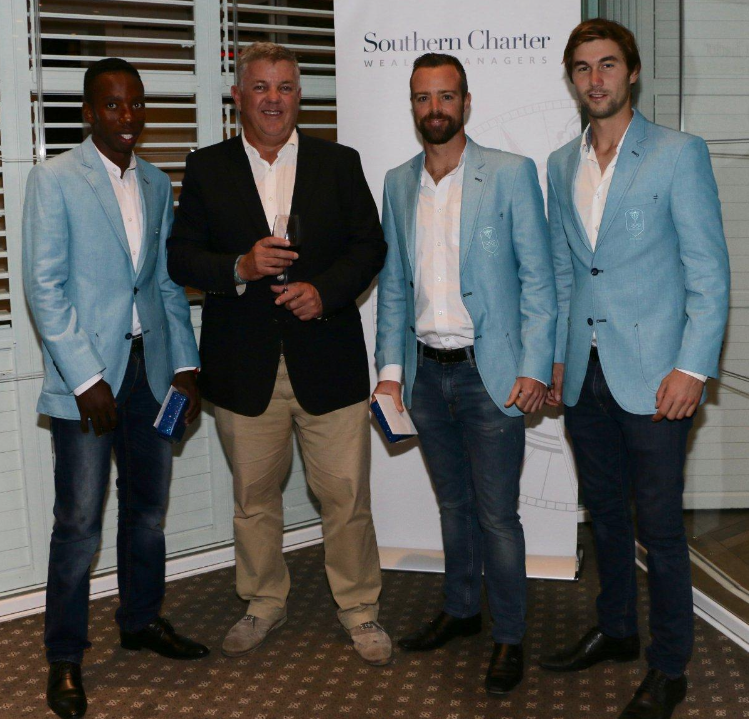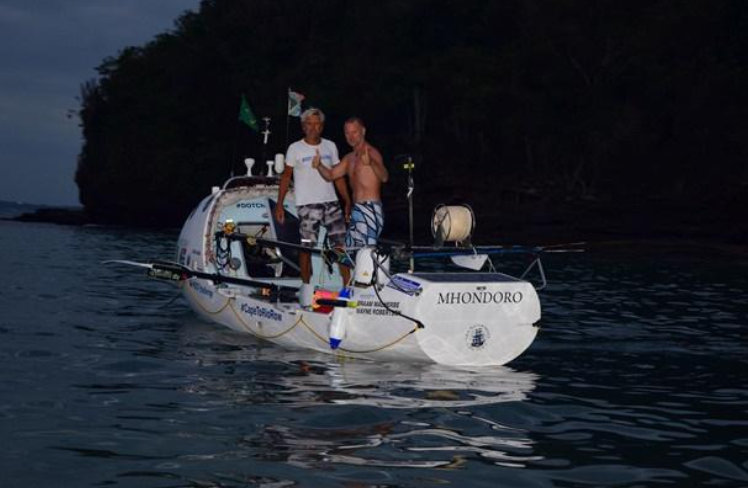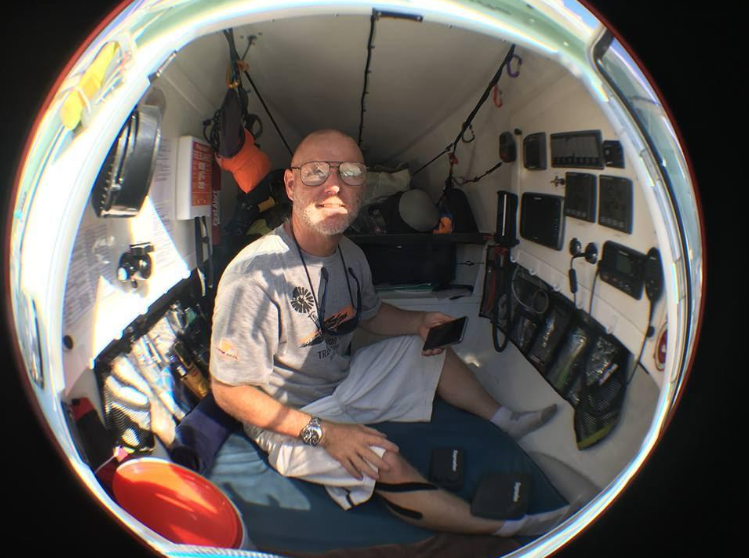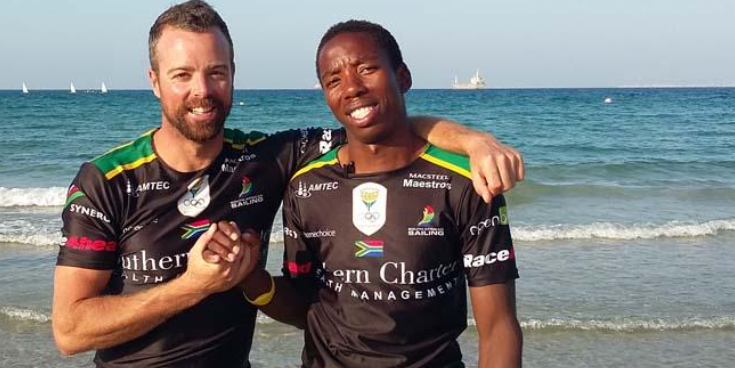Counting down to Rio with Roger Hudson & Asenathi Jim
With the 31st Olympics just weeks away, the race to ready themselves for the gruelling Games has been heating up for Roger Hudson and Asenathi Jim.
They’ve been flitting in and out of South Africa, Brazil and the international circuit since May, as they keep up their drive and stellar performances to ensure that they have the fitness, technical capabilities and handle on their competition ahead of the start of the Olympic regatta from the 9th to the 14th of August 2016.
“We are making progress in the right direction, which is the most important thing. And we are hungrier than ever to keep working hard and get to our end goal… It feels nice to be up there with the top guys and playing their game”, Asenathi Jim has said.
“At the moment we’re gyming, running up and down the mountain, and trying to lose as much weight as possible”, Hudson explains. While bulking up and working on their strength has been an important part of their training, the last few weeks before the races require both Hudson and Jim to be as strong but also as light as possible, and their diets are a huge factor in that. It’s an incredibly important part of any 470 sailor’s strategy, and will hopefully give them that little extra competitive edge in Rio.
Another fundamental part of their preparation has included readying themselves for the ‘near perfect’ conditions of the Marina da Gloria in Guanabara Bay, very different to their ‘home’ at the Oceana Power Boat Club in Granger Bay, Cape Town.
Marina Da Gloria, Guanabara Bay
The difficulties of the Cape’s conditions are something Southern Charter CEO Mark Thompson knows only too well. “Sailing in the Cape is rough; it’s cold and it’s hard, that I’ll tell you”, Thompson says. Even though it was something that he, too, grew up doing, the fierce and unpredictable winds of the exposed oceans here at the bottom of Africa are a daunting challenge for the best of sailors.
Jim and Hudson, however, are no strangers to adversity, and are certainly not shy of a challenge. Their remarkable qualifications to two consecutive Olympic Games bears testament to it. Perhaps the ruthless winds of the Cape had something to do with honing their incredible talent in what they describe as “a real David and Goliath story”. While their qualification for London was so momentous for what they were able to achieve in just 18 months, and because it was “so unusual for a sailor to be Jim’s age and at the Olympic Games… Our goal this time around is to be in the top 10. That’s the medal race and a very ambitious target”, says Hudson.
Asenathi agrees. “There’s a lot of pressure inside me,” Jim says. “This time around it’s not about the experience. It’s to see how far I can push myself and us as a team. I think it’s going to be special, and I’m looking forward to it.” Hudson admits that Cape Town “is a really tough place to sail, but we love that. It’s what we know best. We like the breeze, the big waves. It was actually a really big thing for us, getting used to the ‘easier’ techniques that you need to master for the competitions in the Mediterranean and Rio. Then it becomes more technical.”
Their mastery of the volatile and varied Cape conditions shone through at the inaugural 470 African Championships earlier this year, the first continental Olympic Qualification Event, and a truly ground-breaking moment for (South) African sailing. Amidst heavy winds, turbulent waters, and unexpected injuries, Hudson and Jim fought hard to claim gold, with some heated competition from the Angolan and Algerian teams. Their South African training partners clinched the rest of the top spots.
“It’s pretty special for us to win,” Jim grinned, after returning flanked by the rest of their competitors in a moving guard of honour, a tribute to this remarkable team and their status in the sport. Jim added that, “for our other teams that we train with almost every day to come second, third and fourth means a lot to us. They are some of the many people supporting us. It shows how much training we do as a team. It makes us feel proud. It shows a lot of progress in terms of what we’re doing, and trying to do, here in Cape Town.”
In fact one of their training partners, close friends and July’s sailor of the month, Brevan Thompson, will be heading to Rio with them as their coach. Thompson has been training with the RaceAhead 470 squad for the last four years and is an accomplished sailor in his own right having represented South Africa at the Optimist Worlds and twice at the ISAF Youth Worlds. Formerly coached and managed by Roger Hudson, the student has become mentor this year in the lead up to the Olympics. Asenathi and Roger couldn’t have made a better choice. “When it’s all going well and you’re winning it feels a bit like [TV sitcom] Entourage”, Hudson says with a laugh.
Asenathi Jim, Mark Thompson, Roger Hudson & Brevan Thompson
The 470-Class is one of the most difficult and hotly contested classes in Olympic sailing. The two-person, 4.7 metre dinghy event was designed by Frenchman Andre Cornu in only 1963, first appearing in the Olympics as a mixed gender event in 1976. The category, renowned for its highly competitive racing, is known as the most technical class in the Games. It is also one of the most gruelling sports overall; competitors have to race for five consecutive days in this physically and mentally taxing sport.
One of the most difficult aspects underpinning 470 successes is an understanding of the fine-tuning and setup of the boat, and then being able to balance, calculate and adjust mid-race in response to the conditions, the course and your competition. Hudson explains that “Our boats, like our sailing, our continual works in progress”. “Our boat is already there waiting for us in Rio, now we just need to put it all together”, Asenathi explains.
Gaining a competitive advantage over your competition, in whatever way you can, is crucial in sailing. Competitive sailors are often those who are best acclimatised to the weather and conditions, so knowledge of your environment and how to read the weather and winds – with all of the physics, maths and intuition that requires - can be as important as strength, weight and technical ability. This is why their preparations in Rio so far have been such a pivotal part of their top 10 dreams.
Hudson explains that, at this point in their Olympic preparations, “It is not about the fun. Typically during a long training session we’ll spend six to eight hours on the water, and shorter sessions we’ll do in four. It depends what we’re doing, whether we’re testing our speed, our boat, or training particular skills”. “But we do also enjoy what we do”, Jim adds playfully with a laugh. “No, of course!” Hudson adds. “Sometimes you look around and it’s like, wow, you know, it’s actually… this is beautiful!”
Roger and Asenathi head off to Brazil for the final time before the games tomorrow. On behalf of the entire Southern Charter team, we hope you have many more of those "wow" moments in Rio! Good luck, we'll be rooting for you.
SA Olympians Roger Hudson & Asenathi Jim







